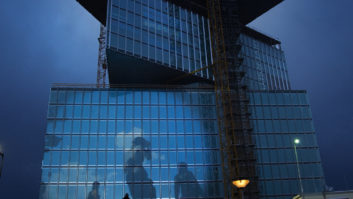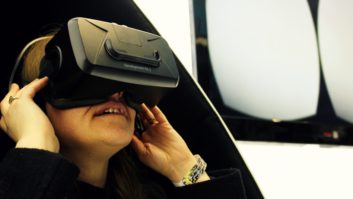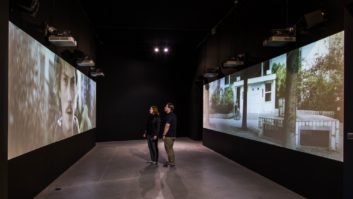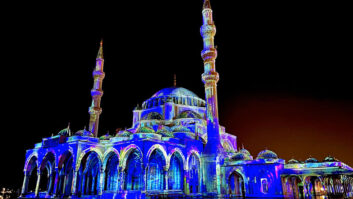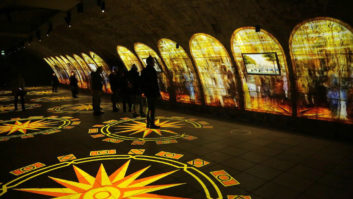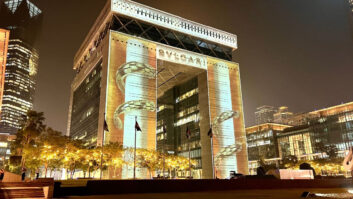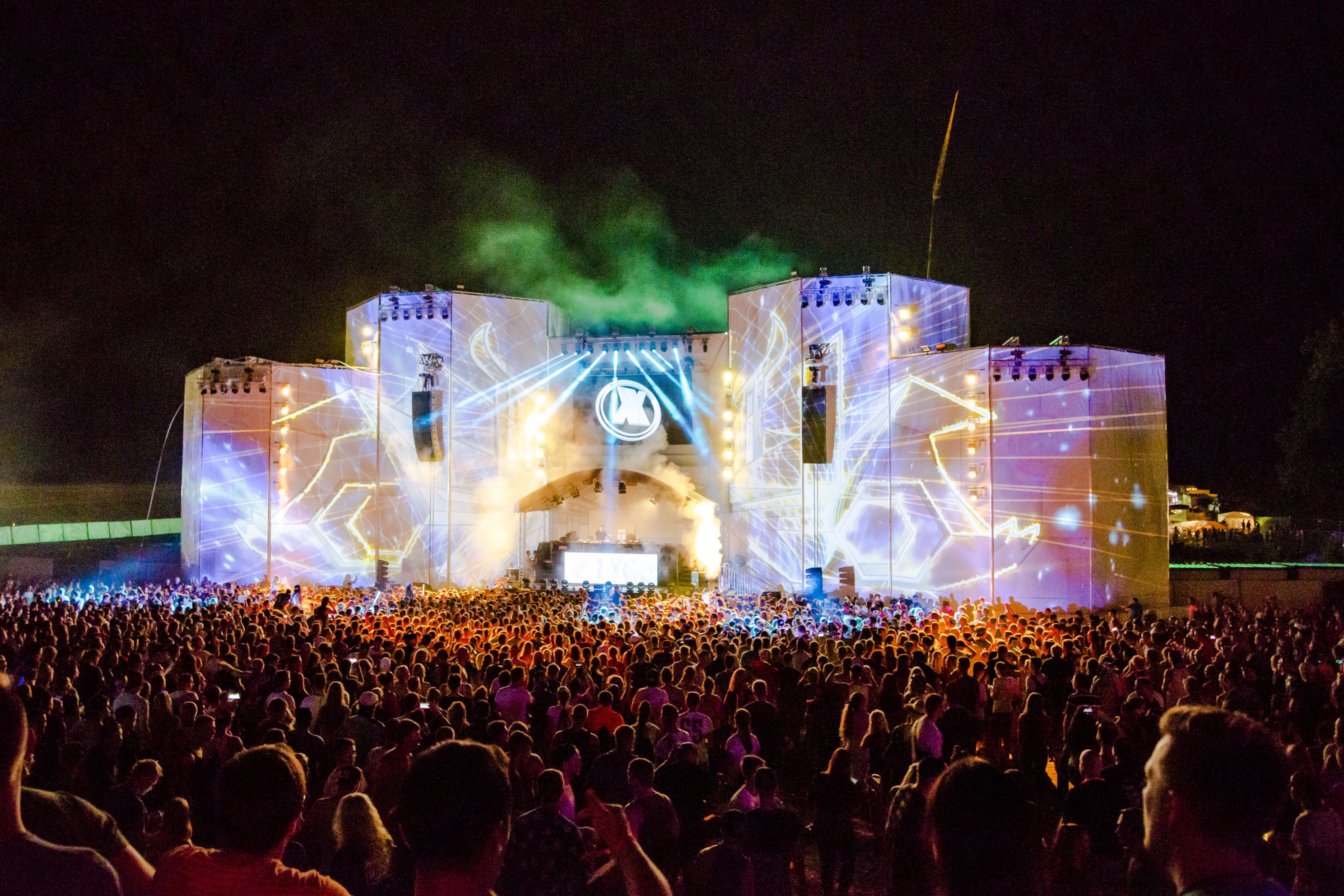
Having previously looked at the tech developments transforming projection mapping possibilities, before revealing the factors driving these changes, Ian McMurray concludes by looking to the future.
“There is always room for usability and workflow improvements in this industry, especially when it comes to supporting different or new file formats,” asserts Hans Stucken, global marketing manager of AV Stumpfl. “Integrating the next generation of laser scanning devices could also potentially revolutionise the way projection mapping projects are being realised in the future.”
“One thing is clear,” he goes on, developing 7thSense Design CEO Matt Barton’s earlier point about 3D without glasses. “Projection mapping is a great way to create visual experiences that can be enjoyed by large numbers of people at the same time in a way that brings people together. This is the exact opposite of some of the VR-headset based attractions and set-ups. You don’t need AR glasses or VR headsets for a great projection mapping experience and can still hug your loved ones and record the experience on your mobile phone – without feeling isolated. On the contrary, if done well, projection mapping events become beautiful communal experiences.”
Barton is clear about where projection mapping is heading. “We’re going to see a continued focus and development push in tracked motion projection mapping technology,” he thinks. “The combination of motion and projection mapping has huge potential, most of which has yet to be explored. Projection mapping will always need to stay on top of other display trends such as frame rate and resolution improvements – as expectations rise, projection mapping will need to stay at the top of its game too.”
For Paul Wigfield, director of projection mapping and 3D projection specialists QED, while much has been improved, there’s also still much to achieve. “QED has been projection mapping for around 20 years,” he smiles, “but only over the past 10 years has projection brightness increased to the level where it’s been possible to achieve such large-scale external projections. But: there’s still a long way to go. Media server software has taken projection mapping to a new level and has turned what once was an incredibly complex design and planning process into an everyday workflow.”
“One of the most fundamental things that software can’t presently do is to pre-simulate the effects of textures and ambient lighting on the projected end result,” he notes. “Only projection site tests can really tell us that. Auto-blending and auto line-up are features that several media servers now include. The results are still not as good as what can be achieved by a skilled projectionist, but they will continue to improve and they already are useful in helping to speed up the process.”
According to Carl Rijsbrack, VP, events at Barco, the near future will see SSI-enabled 4K resolution projection establishing itself in the market, allowing new creative applications and involving a wider range of surfaces. “The combination of projection mapping and moving objects is definitely a development on the horizon,” he believes.
Almost anything is possible
The last word goes to Mark Wadsworth, international marketing manager at Digital Projection. “This field will always be developing – both in terms of software and hardware features – and functions traditionally handled by interface boxes and image processors have now found their way into projectors; this will continue well into the future,” he says. “Any mapping installation starts as a blank canvas and almost anything is possible; the restrictions are only the producer’s imagination. Demands from the market have seen large scale projections become more than just ‘big TVs’ – and today’s technologies allow the creative artists and entertainment specialists to deliver the wow factor.”
There are two reasons why AV systems and solutions have achieved such remarkable success over the past 20 or so years. The first is that they have moved from ‘nice to have’ – bordering on vanity acquisitions – through ‘must have’ to ‘mission critical’. The second is the enormous strides that have been made in delivering fantastic, compelling images – and today, not just on movie screens, but pretty much anywhere. Projection mapping can scarcely be said to be mission critical, in the way that, for example, AV technology today facilitates business, helps manage emergencies or networks, enables retailers sell more goods, or facilitates passengers in finding their way – but it is surely representative of the heights the industry has achieved in creating the spectacular.
Game of Thrones, itself a huge success, starts shooting Season 8’s six 80-minute episodes this month, with the premiere for the show’s last ever season expected in July 2018. It’ll be interesting to see, such is the pace of progress with the technology, what projection mapping will look like at next year’s launch party.
Case Study: Titans move to the Beatz
Open Beatz Festival is an annual electronic music event in Herzogenaurach, Germany, and Digital Projection partner Bambus Veranstaltungstechnik was responsible for the sound, light and video technology. The stage and lighting technology was integrated with a 3D video mapping show that was projected onto a building, which measured 50m wide and 18m high, using only four Titan projectors.
www.7thsensedesign.com
www.avstumpfl.com
www.barco.com
www.digitalprojection.co.uk
www.qedproductions.com

